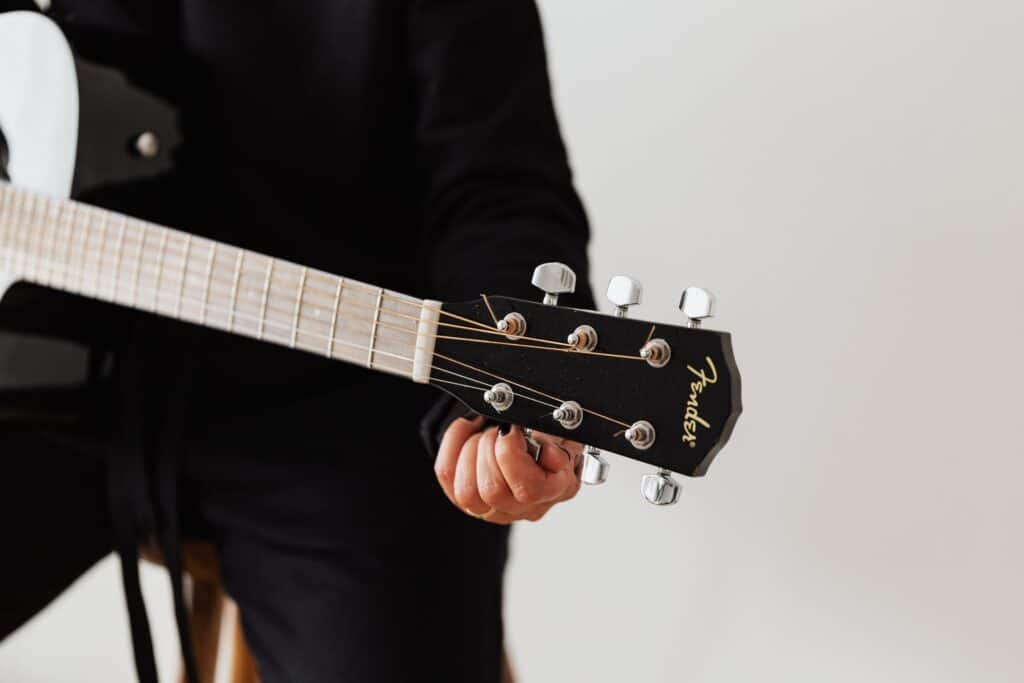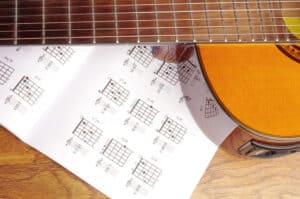
Most guitar players have at least once encountered the problem of loose or too tight guitar strings. Getting the proper tightness of guitar strings can be frustrating, especially for beginners. It certainly was for me as a novice. The tightness of your guitar strings is essential to the tune of your guitar.
So how tight should guitar strings be?
Guitar strings should be tight enough that your guitar is in the right tune. If your guitar strings are tight, the tone of your guitar will be tuned in the right pitch in the right octave as a result. There won’t be a resulting problem of abnormally high or low pitch sound.
This guide explores how tight guitar strings should be by understanding the basic concepts behind string tightness. Also, we get to look at how to find the right tightness for your guitar strings.
Basic Concepts To Understand About String Tightness

String tightness, best referred to as string tension, is crucial to getting the right pitch in the correct octave. They shouldn’t be too tight or too loose. To understand the right string tension and tightness limit, you need to understand some fundamentals.
Octave
Understanding the concept of an octave is crucial to understanding how tight strings should be. Multiple octaves contain the same notes but with different frequencies. A high octave has a higher frequency than a lower octave.
It is essential to know which octave to tune your guitar to because tuning your guitar to a low octave will make your guitar string too loose, and tuning your guitar to a higher octave will make the strings too tight and eventually pop.
Guitar Tunings
There are two different types of guitar tunings that you might be familiar with. They include standard and alternative tunings. They play a role in how tight your guitar strings can be.
Standard tunings mean taking your guitar from the lowest pitch to the highest pitch on the E A D G B E scale. With standard tuning, you can expect your guitar strings to be not too taut and not too loose, thereby making your guitar relatively easy to play and having the right tune.
Standard tuning is good for beginners. However, it is easy to overturn the string with the highest pitch in your guitar during standard tuning. You’d know you are done tuning when the highest and lowest strings are matched at different octaves.
If you’ve played on many songs, you will come across alternative tunings like drop D, used in various music genres.
However, string tensions are usually more or less than standard tuning in the case of alternative tunings. The strings appear looser or tighter. So a beginner should get more familiar with standard tuning.
String Gauges
String gauges are mostly relevant for electric guitars, and they play a huge role in determining how tight the strings of an electric guitar should be. They are used to gauge how thick the strings are, which means there are different types of gauged strings that can be lighter or thicker.
Lighter strings are usually for high pitched sounds which automatically means they need to be tuned to high string tensions, i.e., highly tightened, to match the high pitch. One needs to be careful with these strings as they can pop off the guitar.
Thicker strings, however, are suited to having base effects; hence they usually have lower string tension, i.e., relatively loose.
String Materials
The strings on guitars are made of different materials, such as nickel, steel, nylon, bronze, and brass. Some string materials can’t handle high tensions.
While nylon strings give acoustic guitars unique sounds, they are more likely to break on high tension and are strung too tightly.
Ways to Find the Right Tune & Get The Right String Tightness
Finding the right string tension will automatically guide you in tuning your guitar to the right pitch. So what are the different ways you can use to make sure your guitar is tuned right?
Use of a Piano
A piano can be really useful in helping you find the right pitch for your guitar, especially when trying to tune your guitar to the right octave. This way, you can identify the right correlation between the keys on the piano and the guitar.
Use of Tuning Devices
A few tuning devices are available to help get your guitar in the right state. Such a device is a tuning fork with the E key. It is useful, especially when doing a standard tuning.
You have to bang the tuning fork on a surface and place it against your ear. You tend to hear the desired note to which you can tune your guitar, thereby achieving the right string tension.
Another useful tuning device is the electronic tuner, a portable device made specifically for this purpose. To use this, plug the tuner into your guitar and strike the strings. The tuner is designed to tell you what key you are playing and how perfect it is.
Conclusion
Guitar strings can become too loose or too tight, making the guitar difficult and uncomfortable to play, especially for beginners.
However, you can say that the guitar string is tight enough when the guitar is tuned to the right pitch in the right octave. It is because, at the right string tightness, the guitar tends to have the right tuning.









